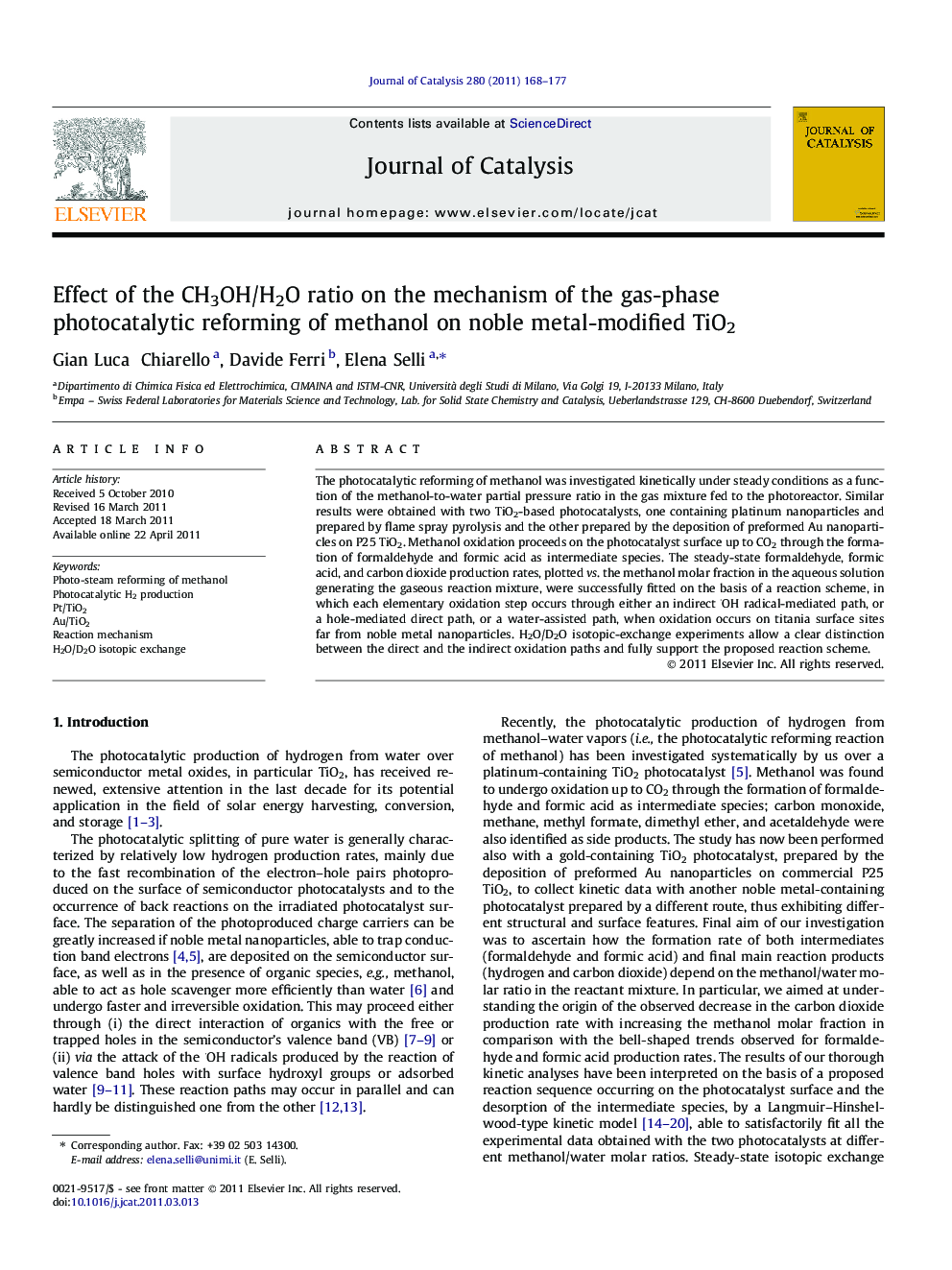| Article ID | Journal | Published Year | Pages | File Type |
|---|---|---|---|---|
| 61542 | Journal of Catalysis | 2011 | 10 Pages |
The photocatalytic reforming of methanol was investigated kinetically under steady conditions as a function of the methanol-to-water partial pressure ratio in the gas mixture fed to the photoreactor. Similar results were obtained with two TiO2-based photocatalysts, one containing platinum nanoparticles and prepared by flame spray pyrolysis and the other prepared by the deposition of preformed Au nanoparticles on P25 TiO2. Methanol oxidation proceeds on the photocatalyst surface up to CO2 through the formation of formaldehyde and formic acid as intermediate species. The steady-state formaldehyde, formic acid, and carbon dioxide production rates, plotted vs. the methanol molar fraction in the aqueous solution generating the gaseous reaction mixture, were successfully fitted on the basis of a reaction scheme, in which each elementary oxidation step occurs through either an indirect ·OH radical-mediated path, or a hole-mediated direct path, or a water-assisted path, when oxidation occurs on titania surface sites far from noble metal nanoparticles. H2O/D2O isotopic-exchange experiments allow a clear distinction between the direct and the indirect oxidation paths and fully support the proposed reaction scheme.
Graphical abstractThe photo-steam reforming reaction of methanol, yielding H2 and CO2 together with formaldehyde and formic acid as oxidation intermediates, proceeds through a hydroxyl radical-mediated indirect path and a direct, hole-mediated path. Water molecules on the photocatalyst surface assist proton transfer to noble metal nanoparticles, where H2 is produced.Figure optionsDownload full-size imageDownload high-quality image (107 K)Download as PowerPoint slideHighlights► A kinetic model is provided for methanol oxidation parallel to H2 photoproduction. ► The model fits the rates of intermediates and CO2 production satisfactorily. ► Methanol oxidation proceeds through three parallel paths on the TiO2 surface. ► Photo-oxidation proceeds up to CO2 on strongly binding photocatalyst surface sites.
